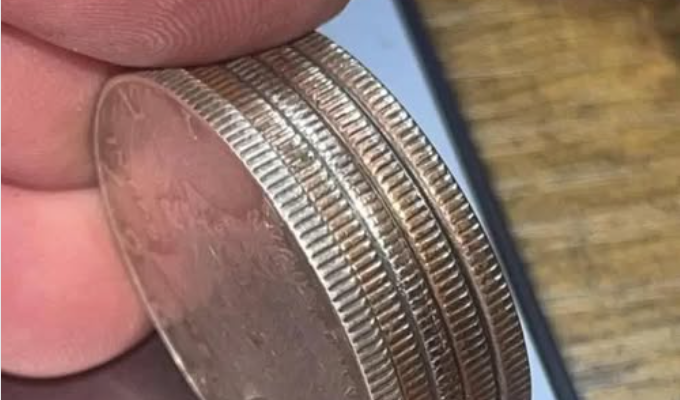Why Quarters Have Ridges: The Hidden History and Purpose of Reeded Edges
Every day, countless coins pass through our hands—quarters, dimes, nickels, and pennies. We use them in parking meters, vending machines, and sometimes find them wedged between couch cushions. But when was the last time you really looked at a coin? Not just glancing at the face value or tossing it into a jar, but really examining its details? If you take a moment to run your finger along the edge of a quarter or a dime, you’ll notice something interesting: tiny ridges etched around the perimeter. These are called “reeds” or “reeded edges,” and they’re far more than just decorative.
Reeded edges are part of a surprisingly deep history, tied to a centuries-old issue that once threatened the economic stability of entire nations. To understand why these grooves exist, we need to go back in time to the 1600s.
A Clever Response to a Serious Problem
During the 17th century, many coins were made from precious metals like silver and gold. Their value wasn’t just symbolic—it was based on the actual weight and purity of the metal in each coin. That created an opportunity for dishonest individuals: coin clipping.
Coin clipping was the act of shaving or cutting small slivers of metal from the edges of coins. These clippings could be melted down and sold as raw silver or gold, while the now-slightly-smaller coin could still be spent at full face value. If enough people did this—and many did—the entire currency system could be undermined. Clipped coins would circulate with less and less actual metal content, leading to inflation and widespread distrust in the monetary system.
To combat this problem, in 1696, the English government turned to a man known for his genius in mathematics and science: Sir Isaac Newton. At the time, Newton was not just a renowned scientist; he was also serving as the Warden of the Royal Mint.
Newton’s Elegant Solution
Rather than relying on endless inspections or punishments, Newton took a more elegant, preventative approach. Under his direction, the Royal Mint began producing coins with reeded edges—fine grooves cut uniformly around the edges during minting. The logic was simple: if someone tried to shave metal from the coin, the altered edge would immediately be noticeable. Any broken or uneven ridges would signal tampering, making the coin suspicious and likely to be rejected by merchants or money handlers.
Newton’s innovation worked brilliantly. Combined with his aggressive efforts to track down counterfeiters and enforce anti-fraud laws, reeded edges helped restore confidence in British coinage. The idea quickly spread to other countries, becoming a standard feature of high-value coins across Europe and eventually in the United States.
More Than a Historical Artifact
You might think that reeded edges are no longer necessary. After all, U.S. quarters, dimes, and half-dollars haven’t been made of silver since the mid-20th century. Today’s coins are primarily composed of copper and nickel, so shaving off metal wouldn’t be worth the effort. And yet, the ridges remain.
Why? Because reeded edges still serve important modern functions—and they go far beyond tradition.
1. Security and Anti-Counterfeiting
Even though modern coins are no longer made of precious metals, reeded edges still make life difficult for counterfeiters. The precision of the ridges is tough to replicate without sophisticated machinery. Many vending machines and coin-operated devices rely on edge detection sensors that analyze the spacing and depth of these ridges to verify a coin’s authenticity. A fake coin might match the size and weight but still be rejected if the edge pattern is wrong.
2. Accessibility for the Visually Impaired
Reeded edges also provide an important accessibility feature. For individuals who are blind or visually impaired, these textured edges offer a tactile way to distinguish between coins of similar size. For example, nickels and quarters are close in diameter, but nickels have smooth edges while quarters have ridged ones. This small detail makes a big difference in helping people identify coins quickly and accurately by touch alone.
3. Preserving Tradition and Familiarity
Finally, there’s a psychological and cultural value to reeded coins. They feel familiar in the hand, they sound a certain way when dropped, and they behave predictably when rolled on a table. This sense of continuity connects us to the past—every time you use a quarter, you’re handling a design rooted in centuries of monetary history.
A Legacy in Your Pocket
So the next time you handle a quarter or a dime, take a moment to appreciate the fine grooves along its edge. What may seem like a small, easily overlooked feature is actually a piece of brilliant design, born from an age-old battle against fraud and deception. Thanks to the ingenuity of minds like Isaac Newton, that simple ring of ridges carries forward a legacy of security, accessibility, and trust—one tiny groove at a time.



